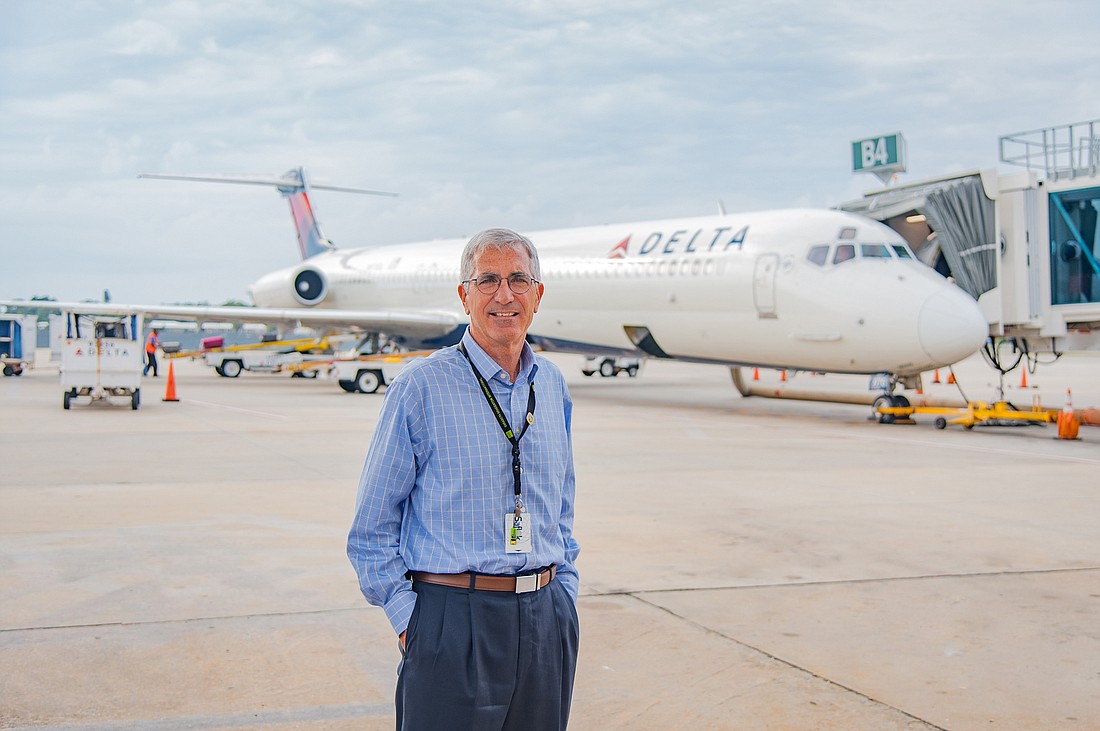- July 26, 2024
-
-
Loading

Loading

The pandemic has led airports nationwide to make big changes to keep their physical plants clean and help keep staff and passengers healthy.
Sarasota-Bradenton International Airport, at the front of the line for those changes, introduced several new cleaning and safety measures, including installing sneeze shields at terminal counters, doubling its janitorial staff, adding social distancing markers to queuing lines, implementing a mask rule for employees and tenant employees, making public address announcements about social distancing, adding temperature checking equipment and adding more than a dozen sanitizer stations throughout the terminal.
“You can’t walk more than about 50 feet without finding a sanitizer station,” airport President and CEO Rick Piccolo says. “We’ve taken every measure that you can to keep the terminal very safe. I don’t think the place has ever been cleaner.”
He expects measures to continue past the pandemic, too. “It’s the new normal,” he says. “I don’t see, from a janitorial standpoint, things changing. It’s a level of service I think the public is going to expect.”
‘Because we’re in such good financial shape and because of our reserves, we’re trying to use our financial position to be as strategic as possible and show airlines that we can be a good partner during this crisis.’ — Rick Piccolo, Sarasota Bradenton International Airport
On the financial side, revenue for the airport, of course, is down, in lockstep with the decline in passenger travel. To lessen expenses, it eliminated nonessential overtime but avoided layoffs, and Piccolo doesn’t foresee any in the future. The airport does have in its pocket a key advantage: It doesn’t have any debt.
For the next budget cycle, the airport, under the call letters SRQ, cut some positions already vacant. That budget also includes $13 million in capital improvements the airport will move forward with.
Between the federal coronavirus relief bill and its own reserves, the airport has about $40 million, with an annual budget of about $20 million. “We’re in very, very strong financial shape,” Piccolo says. “We could go many years at this level.”
For 2021, SRQ dropped rates for airlines, including lowering rent by 3% and landing fees by about 25%. “Because we’re in such good financial shape and because of our reserves, we’re trying to use our financial position to be as strategic as possible and show airlines that we can be a good partner during this crisis,” he says.
Piccolo thinks the biggest factor working in the airport’s favor is the area is a beach destination — a belief held by executives at St. Pete-Clearwater International Airport as well. Vacationers conscious about social distancing are choosing Sarasota and Bradenton’s beaches over other locations in Florida, such as Orlando. Another pandemic plus is SRQ is a smaller airport with smaller crowds.
Those factors have helped the airport do better than others, Piccolo says. “We’re doing about 42% of the traffic we normally have — that’s a little bit above the national average.” Despite beating that average, the pandemic particularly stings because the airport was on a fast growth track prior to the coronavirus, with several airlines announcing new destinations.
Piccolo is looking ahead to potentially improved traffic during the holidays, an expectation dependent on where the U.S. stands with the pandemic. If there’s a spike in cases, that could change. But if and when a vaccine is released, it could spur more travel. “I think things will start to come back,” he says. “It’s going to take a year, two years at least, I think, for us to get to a more normal operation and activity standpoint.”